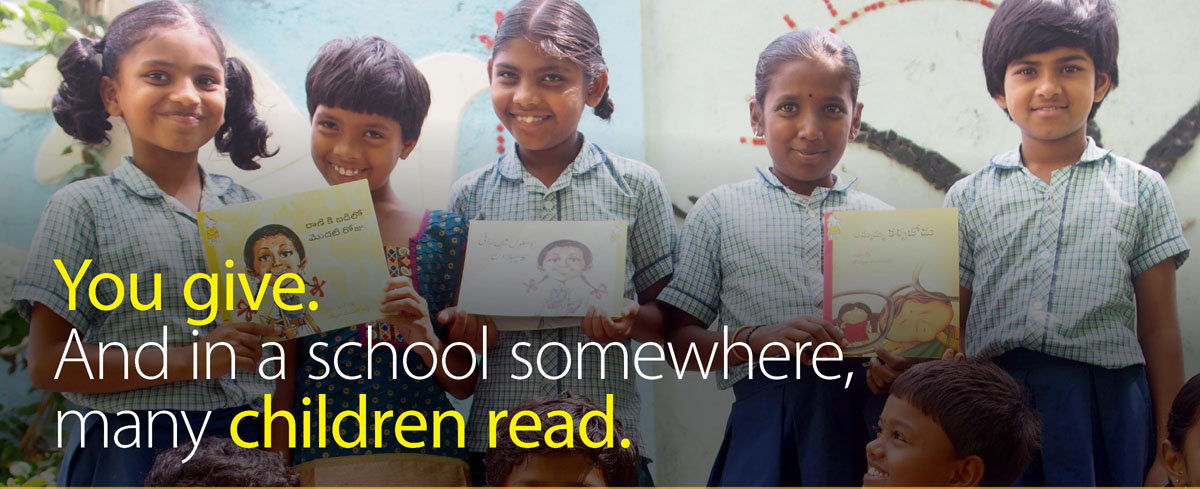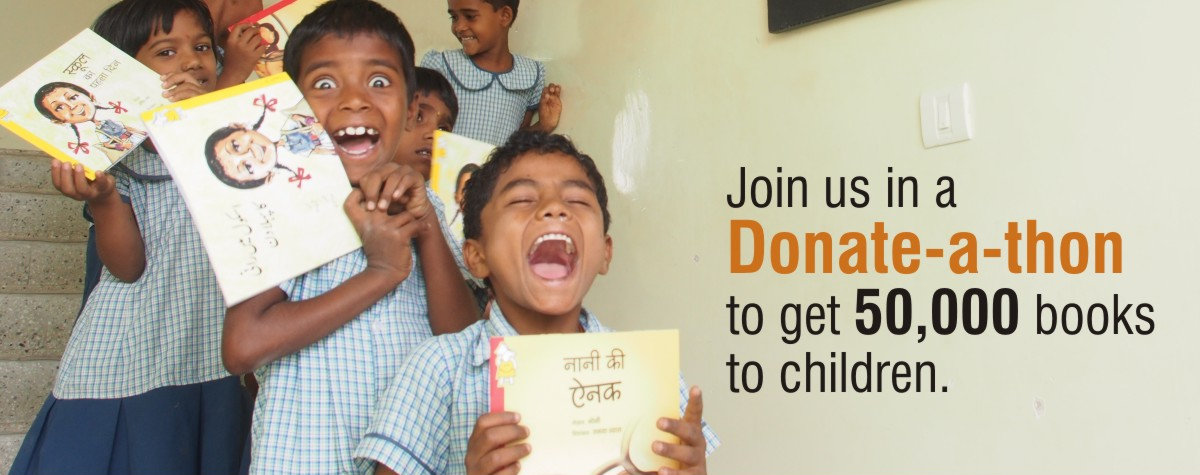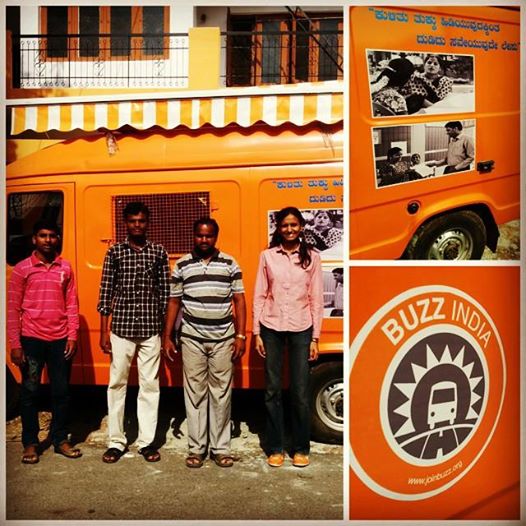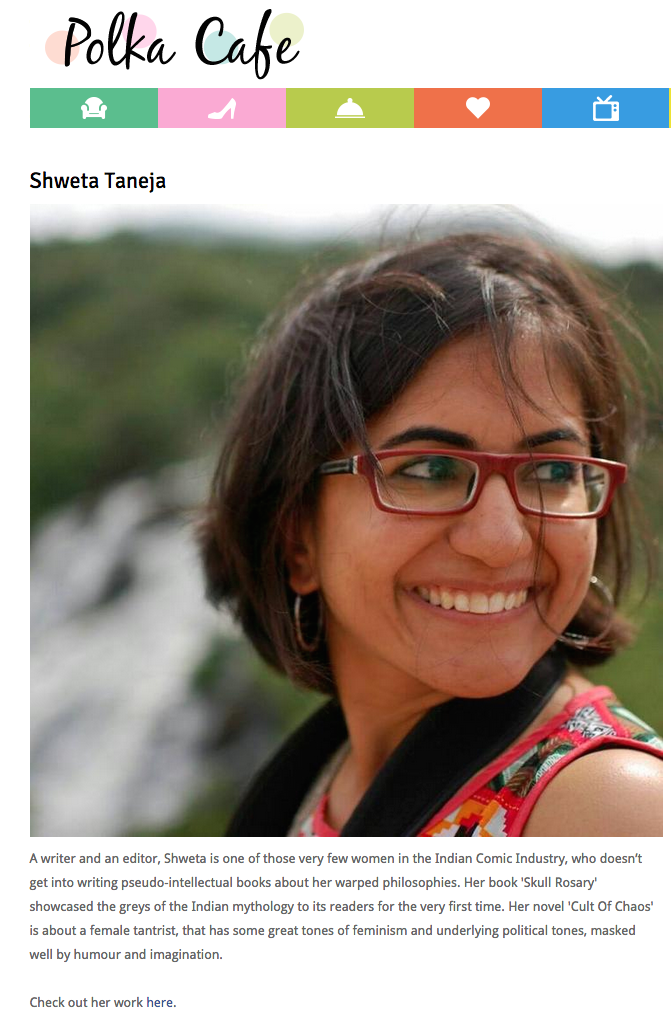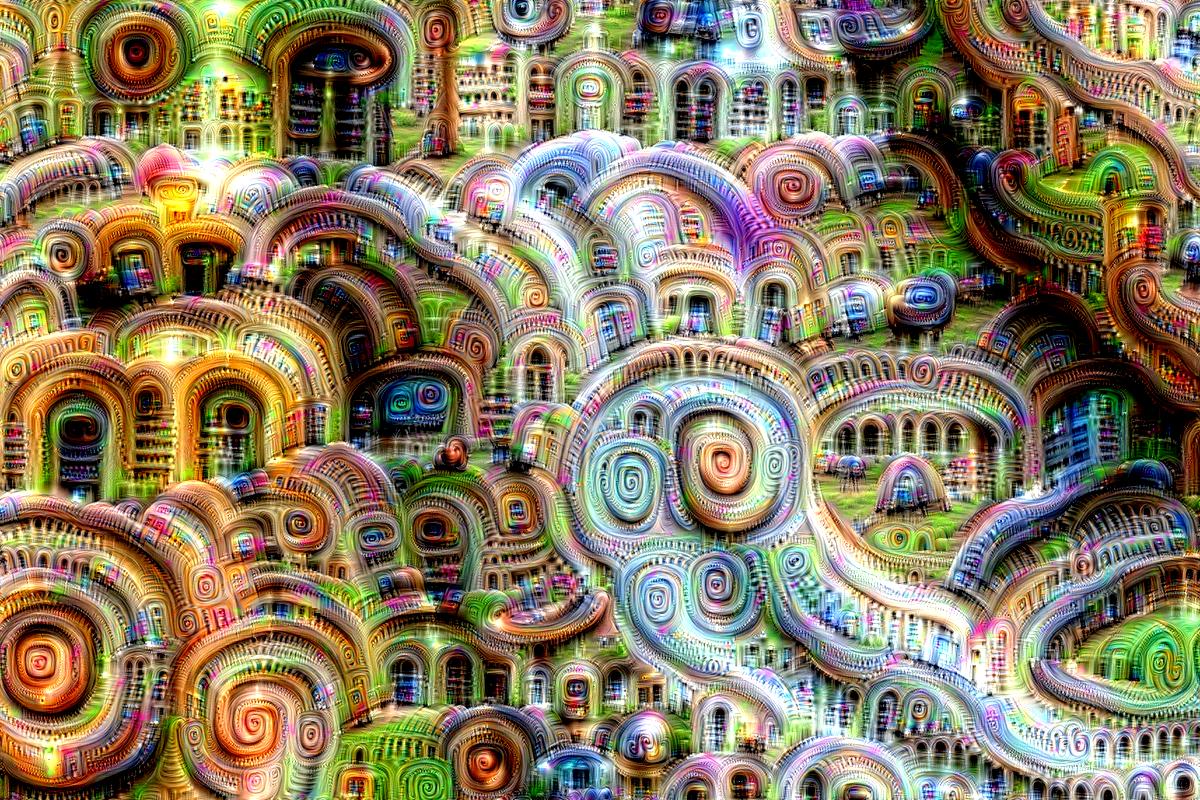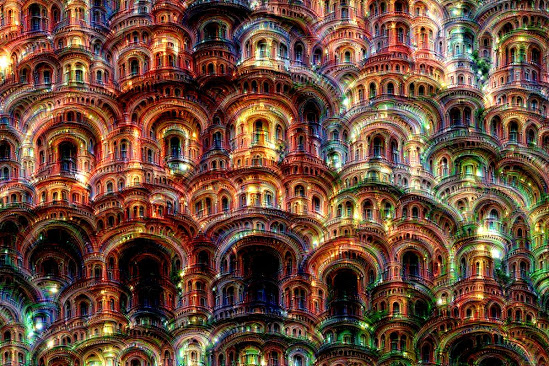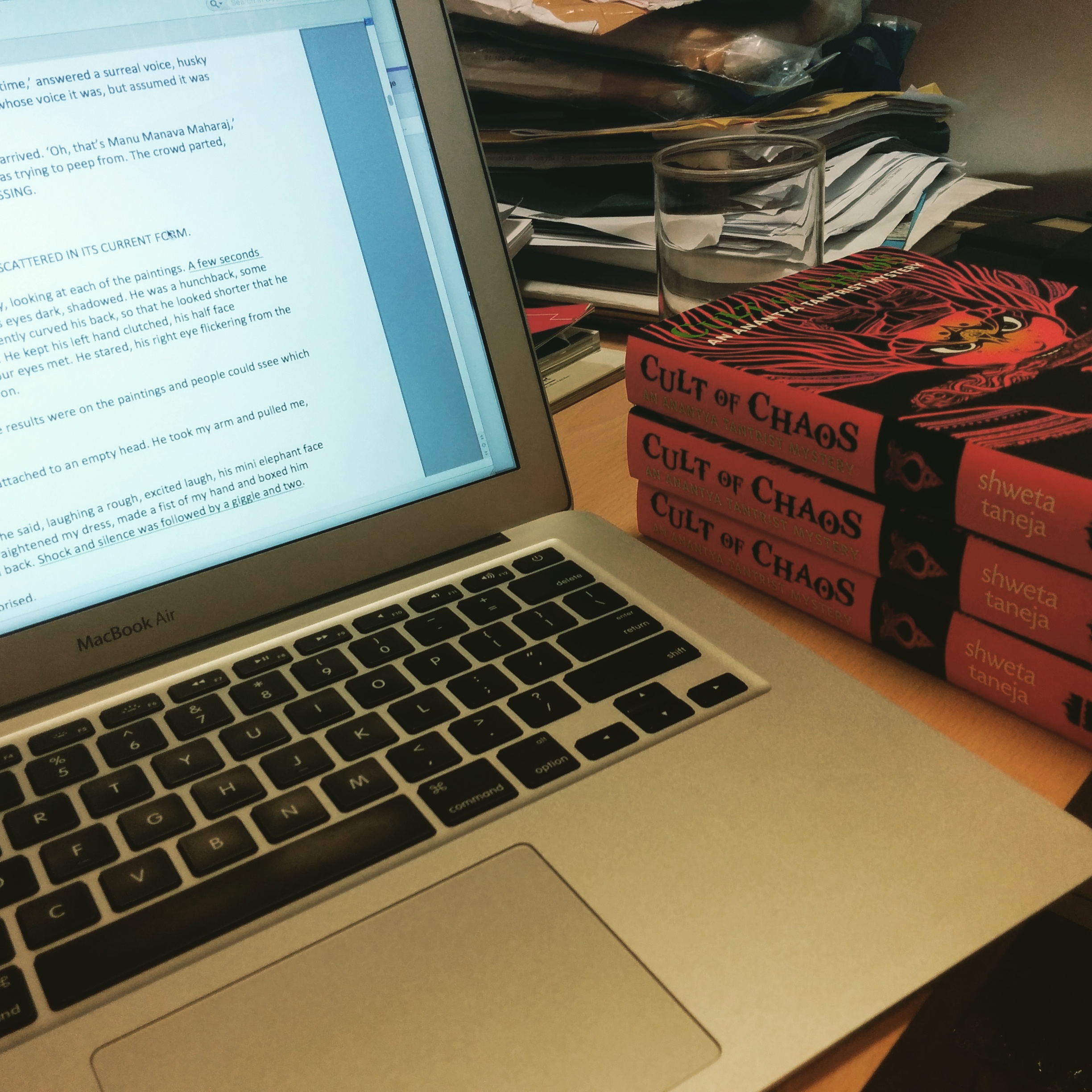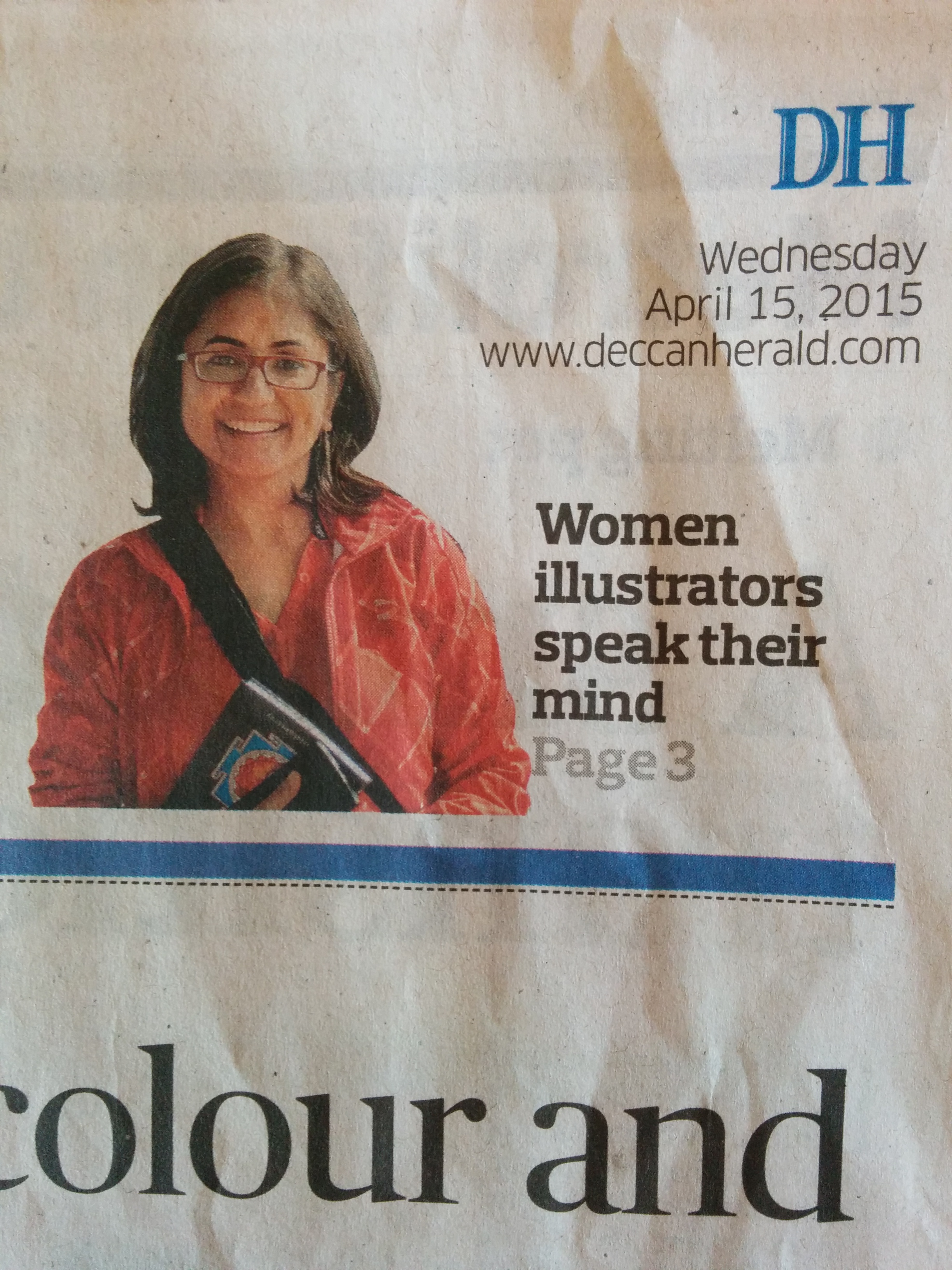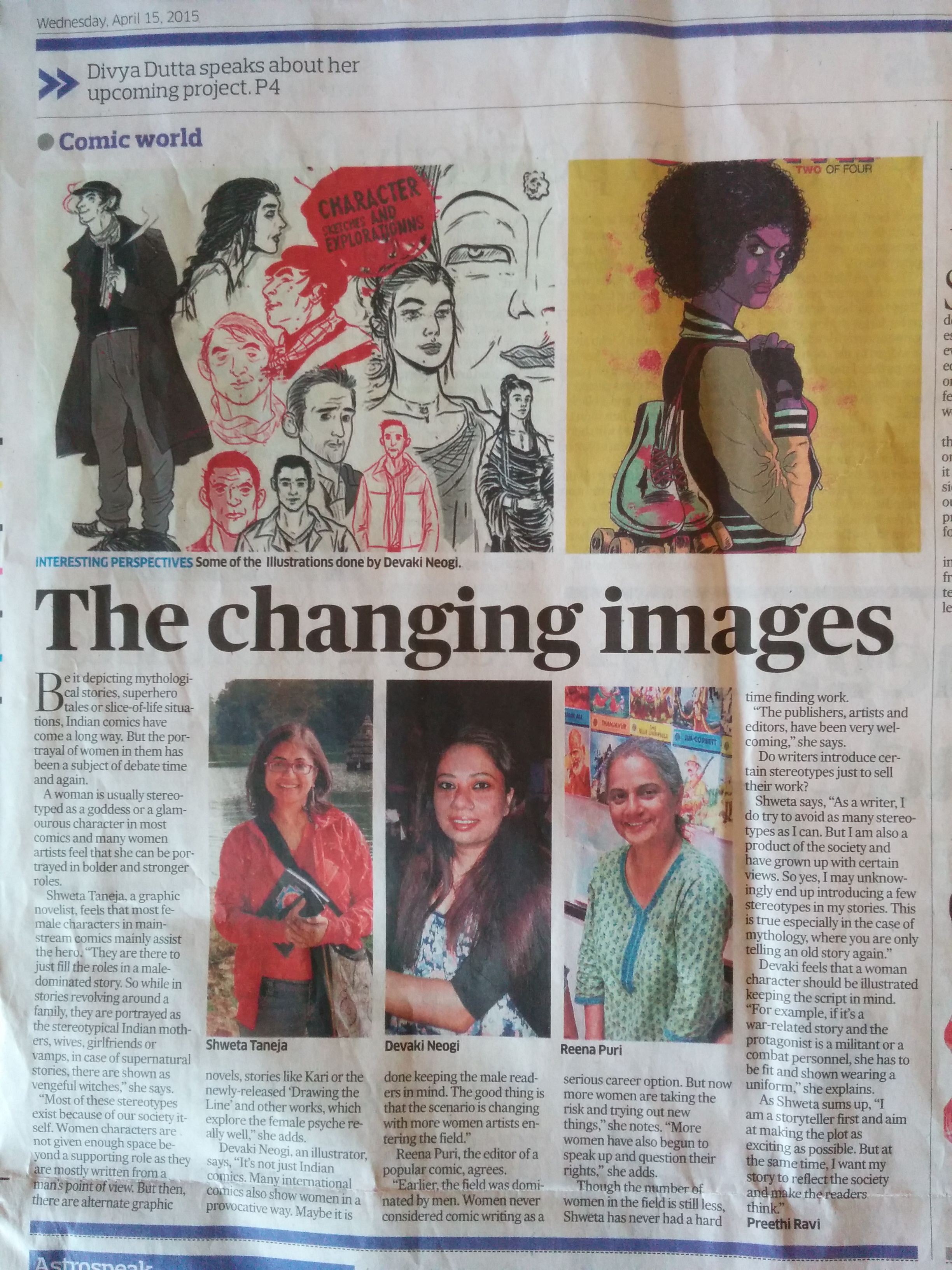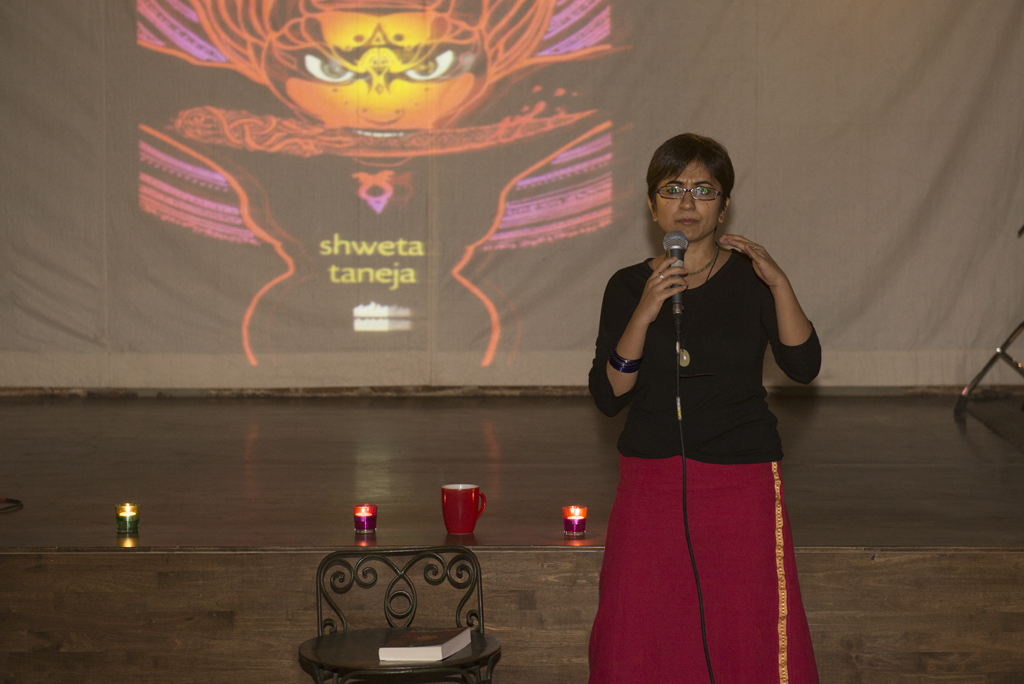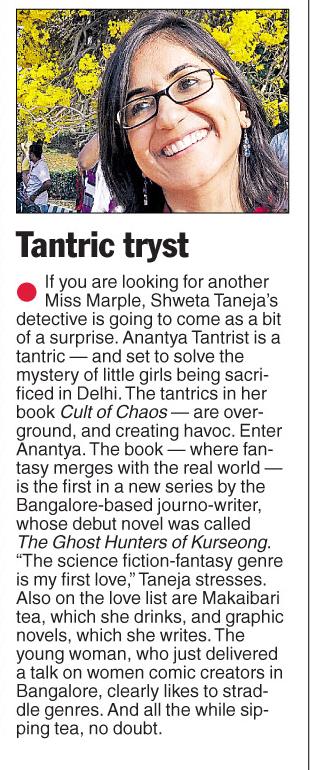As part of my work, I’ve been writing on consumer technology for four years now with Mint but didn’t really think on what kind of technology I used to write these articles, books and keep in touch with various things I do. Not until Gopal, the editor of NDTV Gadgets, wanted to feature me in NDTV Personally Tech. Here’s the interview.
In our weekly column Personally Tech we talk to people from all walks of life to learn about the apps and gadgets that they love and can’t live without. Technology has changed the way we all live and work, in myriad ways.
This week, we caught up with author and freelance journalist Shweta Taneja who talked to us about the gadgets and apps that she swears by. As an author, Taneja has a special interest in weaving myth and occult into the fiction she writes. She tells the stories of ghosts and monsters and demons through novels, stories and comic books. Her latest book Cult of Chaos is a urban fantasy story about a tantrik based in Delhi.
But at the same time, Taneja is a techie who loves experimenting with apps and gadgets to see how things can go wrong with them, and tells us that she can’t imagine her life without her smartphone. Read on to know more about her favourite apps and gadgets.
Describe your technology setup – what computer/ phone/ tablet/ camera/ gaming console/ other gadgets do you use and why
Shweta Taneja: Most of my day is spent on my MacBook Air on which I can be found hunched, furiously typing or fussing over. It is lightweight, portable and has a great keyboard, something that really helps considering I spend more time typing away than eating or even sleeping. I also have a Lenovo desktop with a 27-inch monitor, because when I’m editing, I need a bigger screen to work.
For reading, I have the first generation Kindle, and I sometimes read my own books on it while I’m working on them, to get a fresh perspective. Other than that, I have a Google Nexus 10, which I’m not too happy about in terms of performance but I like it because it’s handy to view comics in as well as see videos. My LG Google Nexus 5 is my life and is never too far away from my hand. It’s useful for work and for entertainment, or taking photos.
What are three apps (mobile/ tablet or PC/ Mac) you couldn’t live without and why?
Shweta Taneja: The most important app is an Internet browser. I use Chrome on my Nexus 5 but am not very happy with it, so I might switch to another one if I find a good alternative. When I’m writing, I am also reading online, either an out of print book from Archives.org, or an article or a folktale or myth on Wikipedia. So the browser is very important for me as a writer. I also love Instagram and PicsArt. PicsArt is the best way to create collages and for sharing, I find it easiest to post on Instagram.
The most used app is probably Gmail. I use my Gmail account for all my official communication, with editors, publishers, agents or for my freelance work, with startups or NGOs or doctors.
Which is the one gadget (other than your phone) you never travel without and why?
Shweta Taneja: I definitely can’t travel without my phone. I use it as a camera, for Google Maps, to share photos on the go through Instagram. I use its flashlight when camping, and I love Sky Map to look up at the stars at night.
On holidays, I am never without my Vortex Crossfire binoculars, which are essential to see details on architecture, birds or monkeys.
What is your dream gadget/ technology setup?
Shweta Taneja: I would like to pick up an SLR now since I’m getting a bit better at photography. I am also curious about the iPad and portable keypad combination since I’m a writer and like to write from anywhere really.
How has technology changed the way in which you work?
Shweta Taneja: It has changed everything for me. I grew up using a 286 computer and remember programs being perennially stuck. By college, our machines at NIFT used to run Windows Vista and hang regularly! Laptops today are faster and much more powerful, and this affects all your work.
When I’m writing, I research online, find people/ bloggers/ social media hogs talking about an issue and it’s become much easier to find people, the right people to talk to. As a folklore researcher, Internet has also made it possible for me to have access to books, scholarly articles and information across the world. I have thousands of libraries at my disposal.
=================
What are the gadgets and paraphernalia you use for writing? Post them in the comment section below!






